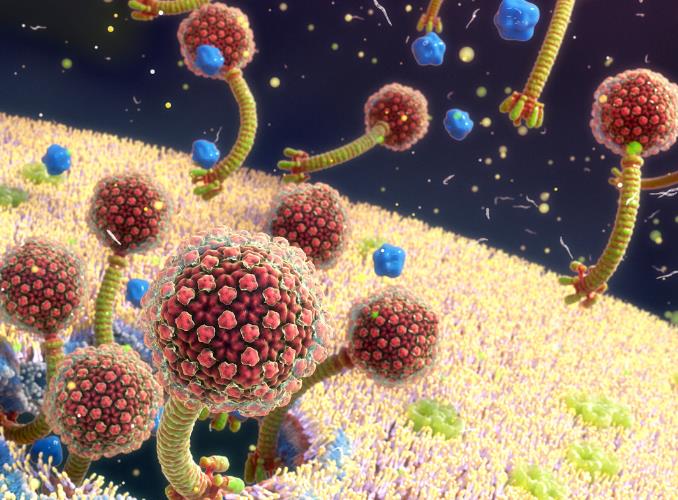Public restrooms are necessary, yet many need to be more active. This issue often stems from concerns about cleanliness and the potential for contracting infections. Understanding the risks and what kind of infections can you get from a toilet seat? can help to solve some of these fears. This article will explore the seven significant infections you might encounter from a toilet seat and discuss effective prevention and remedies.
What Kind of Infections Can You Get from a Toilet Seat?
Gastrointestinal Infections

Disease and Cause
Gastrointestinal infections are primarily caused by bacteria like E. coli and viruses like norovirus. can remain on toilet seat surfaces. These microbes have become known for their ability to last long periods outside the human body. Usually, people become infected when they come into contact with contaminated surfaces and then unintentionally touch their mouths or food without washing their hands.
These led the microorganisms to enter the digestive system. It cause symptoms, including vomiting, diarrhea, and cramping in the stomach. High-traffic public restrooms can serve as breeding grounds for these diseases, mainly when cleaning procedures aren’t up to par. It’s critical to understand these risks and take precautions against them by practicing strict personal cleanliness.
Prevention
Practicing strict hygiene is the best way to avoid contracting stomach diseases from public restrooms. After using the restroom, thoroughly washing your hands with soap and water. Wash your hand for 20 seconds. It lowers the risk of spreading infections to your mouth. You can creat physical barrier against germs by covering the toilet seat with clean tissue paper or using disposable seat covers.
Using paper towels or tissues to absorb moisture from toilet surfaces—such as flush handles and door knobs—can also be helpful. It is best to close the toilet lid to reduce the amount of germs that enter the air during flushing. Increasing public awareness of the significance of these procedures can help improve general cleanliness in public restrooms.
Remedy
Even though most gastrointestinal infections are minor and go away in a few days, staying hydrated is still essential because these illnesses can cause substantial fluid loss. To keep electrolyte balance and avoid dehydration, drink lots of water and, if needed, take oral rehydration treatments. It’s crucial to consult a doctor if your symptoms worsen or continue since some illnesses may need to be treated with antibiotics or antivirals. You might be required hospitalization in extreme circumstances to treat dehydration and other issues. Rest is advised so that the immune system can successfully combat the infection.
Skin Infections
Disease and Cause
When bacteria like Staphylococcus bacteria come into touch with your skin, mainly through cuts or abrasions, skin infections like those caused by these microorganisms can happen. Toilet seats are among the surfaces these germs can grow on, particularly when cleaning isn’t done thoroughly.
While it is uncommon, it is conceivable in situations where hygiene is lacking to transmit from toilet seats. Small swelling, redness, and discomfort at the injection site are common symptoms of infections, which, if managed, may progress to more severe illnesses. Individuals with weak immune systems or pre-existing skin disorders are more vulnerable.
In public restrooms, where the flow of people might increase the amount of hazardous bacteria present, it is imperative to exercise caution. Being aware of these risks enables one to take the necessary safety measures. Understanding these risks helps in taking appropriate precautions to avoid infections.
Prevention
Avoiding direct skin contact with public restroom chairs is essential to preventing skin infections. Especially if you have any open wounds or sores, a protective barrier can be created by covering toilet seats with covers or the seat with toilet paper. To reduce exposure to bacteria, keeping open wounds covered adequately with dry, clean bandages is also critical. Thoroughly washing hands after using the restroom might help eliminate any bacteria that may have gotten on them.
Additionally, risk can be lowered by routinely cleaning and sanitizing personal belongings like wallets and phones that come into touch with public surfaces. Additionally, maintaining general cleanliness and dryness of the skin, especially in humid or moist environments, is critical to preventing bacterial growth. Educating others about these preventive measures can further reduce the spread of infections.
Remedy
Over-the-counter antibiotic ointments are frequently helpful in treating the symptoms and getting rid of minor skin infections. Applying the ointment as the manufacturer directs—typically multiple times daily—will aid the area’s management and stop bacteria from spreading. It’s crucial to see a doctor about prescription medications if the infection worsens or worsens.
Others can be protected, and additional pollution can be prevented by keeping the affected area clean and covered. More aggressive therapies, such as intravenous antibiotics, may be necessary in cases of severe skin infections. Painkillers can also be used to ease the discomfort brought on by the illness. Rest and appropriate wound care are crucial to promoting the healing process.
Urinary Tract Infections (UTIs)
Disease and Cause
The primary reason for urinary tract infections (UTIs) is the development of bacteria, such as Escherichia coli, in the bladder due to their entry through the urethra. While UTIs are uncommon to be acquired directly from a toilet seat, the risk can be elevated by the close proximity to common bacteria found in washroom settings. This is especially true in public restrooms, where a high use volume might increase the risk of infection.
Due to the shorter space between the anus and the urethra, which facilitates bacterial translocation, women are typically more vulnerable. Urine that smells strongly or is hazy and a burning feeling when peeing are signs of urinary tract infections (UTIs). Ignoring all these signs can lead to more severe infections like cystitis or, in severe cases, kidney infections. It’s important to recognize and address these symptoms early to prevent the progression of the infection.
Prevention
UTI prevention requires a few simple hygiene precautions. It is possible to considerably lower the chance of bacterial transmission from the anus to the urethra by constantly wiping after using the restroom from front to back. Staying hydrated is essential; consuming lots of liquids helps remove bacteria from the urinary tract before an infection can develop. Urinating shortly after sexual activity is also advised to remove any bacteria that may have been introduced.
Preserving the natural defenses of the urinary system can also be aided by avoiding feminine items that may irritate the skin, such as certain powders and sprays. Sanitary napkins must be changed regularly to stop bacteria from growing during menstruation. Spreading knowledge can aid in lowering the prevalence of UTIs, particularly among people unfamiliar or new to these procedures.
Remedy
Antibiotics are usually used as part of a treatment plan for urinary tract infections to eradicate the germs. Even if your symptoms improve, you should still finish the course your doctor ordered to ensure the infection is completely gone. Water consumption facilitates urine dilution and expedites the elimination of microorganisms from the urinary system. The soreness or discomfort frequently related to UTIs can be reduced by applying heat, such as from a heating pad to the abdomen.
Urinary pain medicines available without a prescription may also relieve symptoms, but they should only be used cautiously and temporarily. Doctors may suggest longer-term preventative antibiotics in recurring situations. Ensuring regular follow-ups with a doctor can help effectively manage and prevent infections in the future.
Influenza

Disease and Cause
Influenza, also known as the flu, is a respiratory ailment caused by viruses that can survive on hard surfaces such as toilet seats for up to 24 hours. The virus can spread from toilet seats to hands and then to the face, where it can enter the body by the mouth, nose, or eyes, even though direct transmission from toilet seats is not the most common way to contract the flu.
Since regular use of public or shared bathrooms does not give viruses enough time to die off, this indirect transfer is particularly likely to occur there. Flu symptoms can worsen quickly, including fever, coughing, sore throats, tiredness, and muscular pains.
Influenza is highly spreading disease and can lead to severe complications, particularly in young children, older people, and those with weakened immune systems. Understanding how the flu virus spreads and the surfaces on which it can survive helps prevent the disease effectively. Vigilance during flu season is essential in communal and public spaces.
Prevention
Cleaning your hands thoroughly and consistently with soap and water is the first step in effective influenza prevention. This easy-to-follow but essential habit can drastically lower the risk of flu transmission. The soap and water are not easily accessible during flu seasons. So, it is best to use hand sanitizer, especially after touching surfaces in public toilets.
Reduced face-touching following exposure to public areas can also help stop the virus from entering the body.Since phones and keys frequently contain bacteria and viruses, keeping them clean and sanitized is best. Public toilets are recommended to provide sufficient facilities for handwashing and drying to promote good hygiene habits. Additionally, getting the annual flu vaccine is an effective way to prevent influenza, as it prepares the body’s immune system to fight it.
Remedy
Antiviral drugs are typically used to treat influenza cases, and they work best when taken within 48 hours of the onset of symptoms. These drugs can shorten the length of the disease and decrease the intensity of the symptoms. Sleep is essential because it enables the body to concentrate its efforts on combating the infection.
It is crucial to stay hydrated to assist in alleviating symptoms and avoid dehydration, which can happen particularly when there is a fever and sweating. Over-the-counter drugs can help in treating fever, flu-related aches, and discomfort. Hospitalization may be necessary for high-risk patients or those with severe symptoms. Having routine check-ups with a medical professional guarantees that issues are dealt with as soon as possible.
Fungal Infections

Disease and Cause
Fungal infections, like athlete’s foot and jock itch, are caused by fungi that grow in wet, warm places like toilets. These creatures can live on surfaces similar to toilet seats, especially in areas where the environment is favorable for the growth of fungi, like public toilets or fitness centers. Fungi can spread and grow when skin touches a contaminated surface, resulting in an infection.
Rashes that are itchy, red, and even severe are the hallmarks of these infections and can be highly uncomfortable. Individuals who use public restrooms or changing areas barefoot are especially vulnerable. Understanding that fungi can reside on various surfaces and not just floors can broaden preventive measures. Awareness of these risks is crucial, especially in public or shared facilities.
Prevention
It is necessary to practice proper personal cleanliness and caution when in areas where fungi are likely present to prevent fungal diseases. Keeping your skin clean and dry is critical since fungi like damp environments. Thoroughly drying off after public bathrooms or showers can help stop fungal spores from sticking to the skin. High-risk regions can also be protected by using antifungal powders or sprays, mainly if you frequently use public pools or gyms.
Another practical preventive step is to change rooms and showers in shared areas while wearing flip-flops or sandals. Share-avoiding personal goods such as shoes, towels, and razors can spread the spread of fungal infections. Wearing clean, dry clothes—especially for the gym—also lowers the chance of fungus growth and spread.
Remedy
Generally speaking, over-the-counter topical antifungal treatments work well for fungal infections. These treatments can get in various forms, including creams, sprays, and powders, and their application instructions state that they should be administered directly to the affected area. Even if symptoms seem to improve before the suggested treatment course is finished, sticking with the treatment for the recommended length is crucial to obliterate the fungus. Throughout therapy, keeping the affected area dry and clean aids in the healing process and stops the infection from spreading. It might be required to see a healthcare professional to receive prescription-strength drugs in more severe situations or if the infection does not respond to over-the-counter therapies.
Hepatitis A

Disease and Cause
The primary way that hepatitis A is spread is by the fecal-oral route, which is frequently caused by drinking tainted water or food. While the chance of catching Hepatitis A from a toilet seat is low, it can nonetheless happen if the surface is contaminated with an infected person’s feces. When an infected individual uses the restroom without adequately washing their hands, the virus may get on surfaces and spread through this route of transmission.
Depending on the surroundings, the virus may survive months without entering the body. Hepatitis A symptoms that can seriously affect daily activities and health include jaundice, yellowing of the skin and eyes, nausea, and weariness. Understanding how the virus spreads and the environments in which it thrives can help take adequate preventative measures. It is essential in areas or settings where hygiene might be compromised, such as crowded public places or poor sanitation facilities.
Prevention
The most reliable method of preventing Hepatitis A is vaccination. Those in high-risk categories and visitors to regions with elevated virus rates are advised to get the vaccine, which offers durable immunity. Maintaining proper hand cleanliness is essential for preventing Hepatitis A and immunization.
It is helpful to thoroughly wash your hands with soap and water before and after using the restroom to get rid of any virus. Hand sanitizers can offer extra protection if soap and water are unavailable. In regions where Hepatitis A is prevalent, it is also advised to avoid eating raw or undercooked food. Increasing community awareness of the need for good personal cleanliness and sanitation can greatly slow the virus’s spread.
Remedy
After Hepatitis A is acquired, there is no particular antiviral medication; still, supportive care is essential for symptom management and recovery. Being well-hydrated is vital because the illness frequently induces diarrhea and vomiting, which can cause dehydration. Rest is advised to help the body’s immune response. Monitoring the results of liver function tests aids in determining the infection’s severity and directing the healing process.
Hospitalization might be necessary in certain circumstances, particularly if the patient has pre-existing liver issues or is severely dehydrated. By following a balanced diet and abstaining from alcohol, liver issues can be reduced. Regularly following up with medical professionals guarantees that issues are swiftly identified and successfully handled.
Common Colds
Disease and Cause
Numerous viruses can cause common colds, but rhinoviruses are the most prevalent. There is a chance of transmission because these viruses may remain on surfaces like faucets, door handles, and toilet seats for several hours. It is rare to become infected directly from a toilet seat, but you can become infected if you touch your nose or eyes after contacting contaminated surfaces. Because the cold virus grows best in close quarters, public areas like toilets are potential hotspots for transmission. Sneezing, coughing, runny nose, and sore throat are typical cold signs. These are usually modest symptoms that become noticeable one to three days after exposure to the virus, but they can be highly uncomfortable.
Prevention
The best defense against the common cold is practicing good hand hygiene. Frequent hand washing with soap and water for a minimum of 20 seconds can significantly lower the chance of catching the virus or passing it on to others. It’s especially crucial to wash your hands before eating, using the restroom, and sneezing or coughing.
Using an alcohol-based hand sanitizer eliminates any viruses on your hands in situations where soap and water are unavailable. Additionally, since your mouth, nose, and eyes are the main places the virus enters your body, it’s crucial to refrain from touching these areas of your face with unclean hands. Keeping frequently touched objects sanitized and clean can also help stop cold viruses from spreading.
Remedy
As the virus itself has no known cure, the main goal of treatment for the common cold is to reduce symptoms. Congestion, runny nose, and sore throat symptoms can be relieved with over-the-counter drugs such as decongestants, antihistamines, and painkillers. Drinking lots of fluids, like water, fruit or vegetable juice, and herbal teas, can assist in dehydrating people and relieve congestion.
In addition to improving breathing, a humidifier in your house helps relieve sore throats and nasal passages. Getting enough sleep is best so your immune system can successfully combat the infection. Antibiotics are ineffective against viruses, so they are only prescribed if a bacterial infection develops. Monitoring symptoms is essential to ensure they do not worsen or lead to more severe health issues.
Conclusion
Even though using a toilet seat can spread some infections, the danger is minimal if hygiene precautions are followed. You may reduce your risk and safeguard your health by keeping things clean and paying attention to your hygiene. Developing good habits like routine hand washing, covering toilet seats with protective coverings, and avoiding direct contact with public restroom surfaces are crucial. Communities can become healthier by raising awareness of the value of these behaviors among oneself and others. Awareness and proactive self-care are the keys to avoiding infections in public restrooms and other common areas.
FAQs
Can you get sexually transmitted infections (STIs) from a toilet seat?
The risk of contracting STIs from a toilet seat is shallow as these infections generally require direct person-to-person contact.
How long do germs survive on a toilet seat?
Most germs can survive on hard surfaces for hours to days, but their ability to cause infection diminishes over time.
Is it safe to use public toilets during a pandemic?
Yes, if you practice good hand hygiene and avoid touching your face. Using barriers like seat covers can also provide peace of mind.

